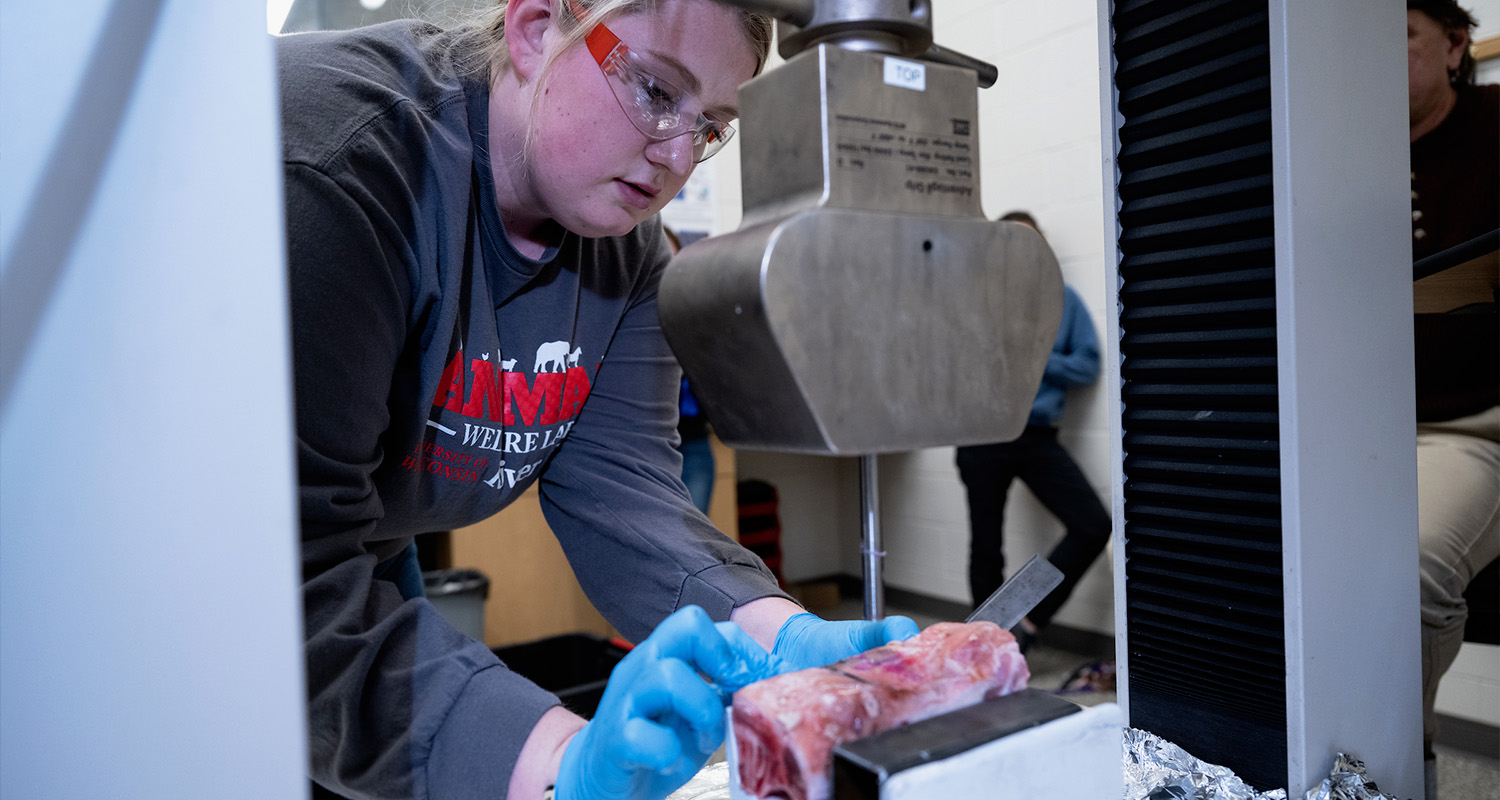Facilities, Equipment and Resources
The Animal and Food Science Department has some unique facilities! We have laboratory spaces comparable to other science-based programs but we also have small scale production facilities such as our farms and food processing plants. Our programs are supported by coursework in chemistry and biology, which are just months away from moving into the new Science and Technology Innovation Center, which is being built just across the sidewalk from the Ag Science Building. Explore to see some of the facilities you'll be learning and working in at UWRF!
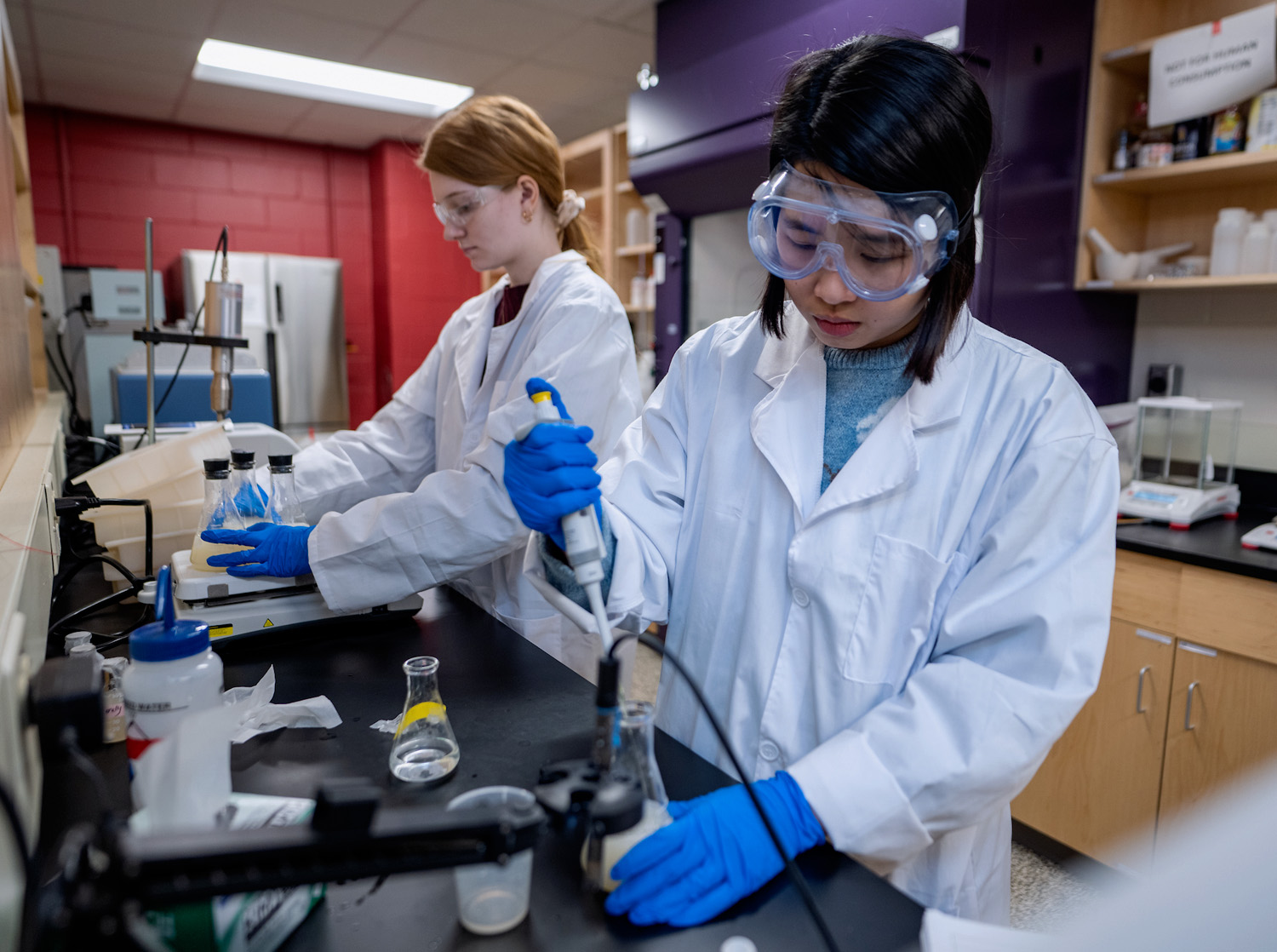
Production Facilities
We have two of them! Mann Valley Farm is dedicated to our production agriculture programs. It sits just outside the city of River Falls and houses dairy, beef, sheep, swine cropping and composting operations. There are two classrooms in the Dairy Learning Center (DLC), adjacent to the milking parlor, and a short distance from both the compost dairy barn and the calf barn. The pavilion is another learning space for hands-on work with animals, along with the animal handling facility associated with the beef enterprise.
The Campus Farm is within walking distance of main campus and is primarily dedicated to the animal science-equine program, with both outdoor and heated indoor riding arenas and breeding facilities, in addition to the barns and classroom space. (And we provide the horses!)
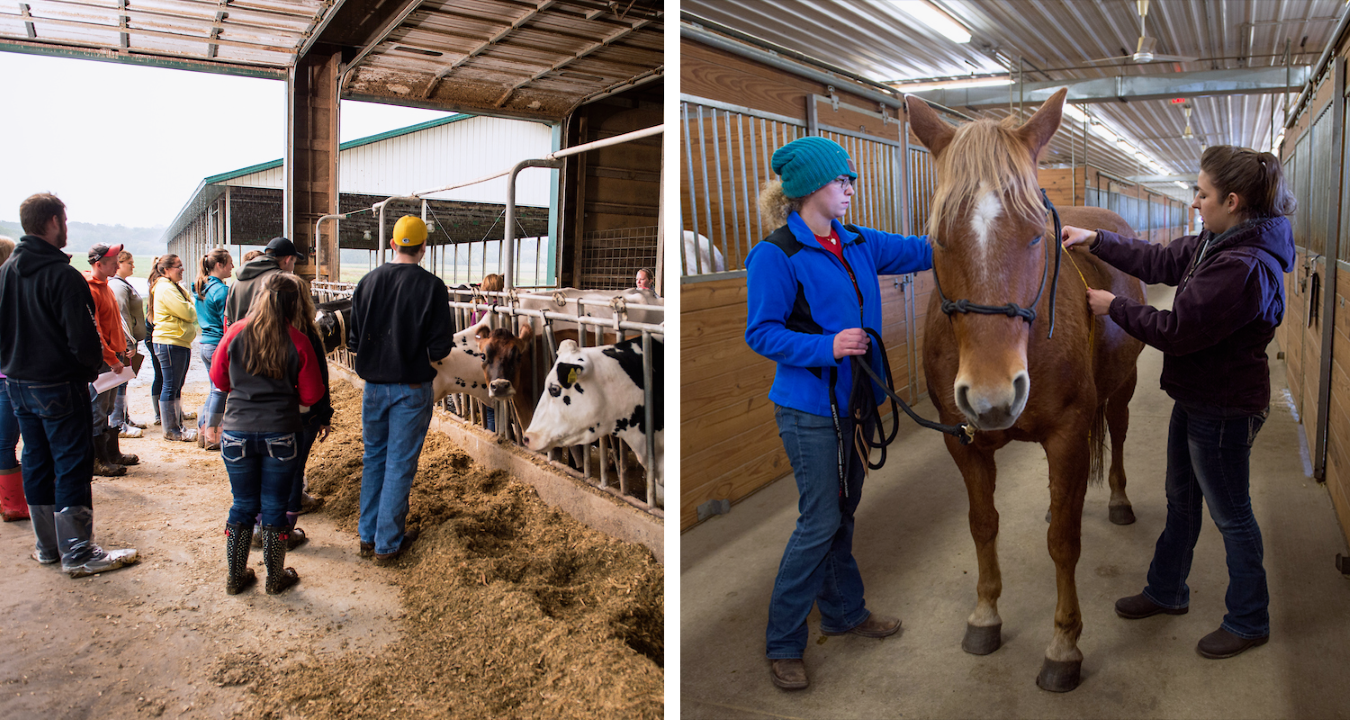
The UWRF Dairy Plant was recently renovated and expanded with strong support from Wisconsin’s dairy processing industry. In honor of a generous donation, the plant was named the Wuethrich Family/Grassland Dairy Center of Excellence. It houses state-of-the-art dairy processing equipment and provides the ability to do large and small production runs using milk from our cows at Mann Valley Farm. The cheese and ice cream is marketed under the Falcon Creamery name via Freddy’s Dairy Bar both on and off-campus.
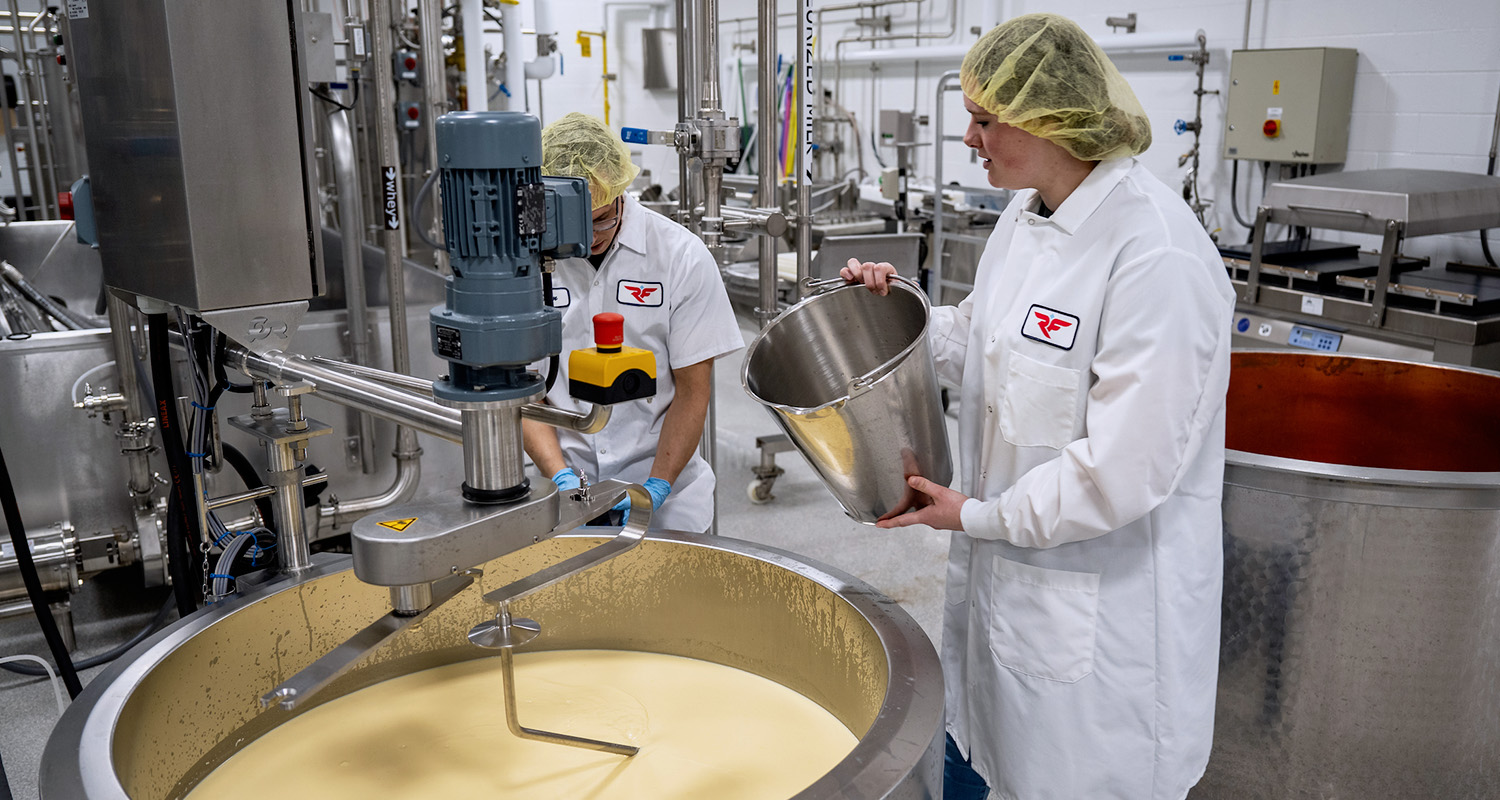
The UWRF Meat Plant is a USDA-inspected facility with live animal to ready-to-eat product capability. The space includes an animal intake space and harvest floor, a carcass cooler, spaces for fabrication of the carcass into steaks, chops, etc., spaces for further processing, including making Wisconsin favorites (think sausages and brats!), smokers, packaging and labeling capability and cold storage space.
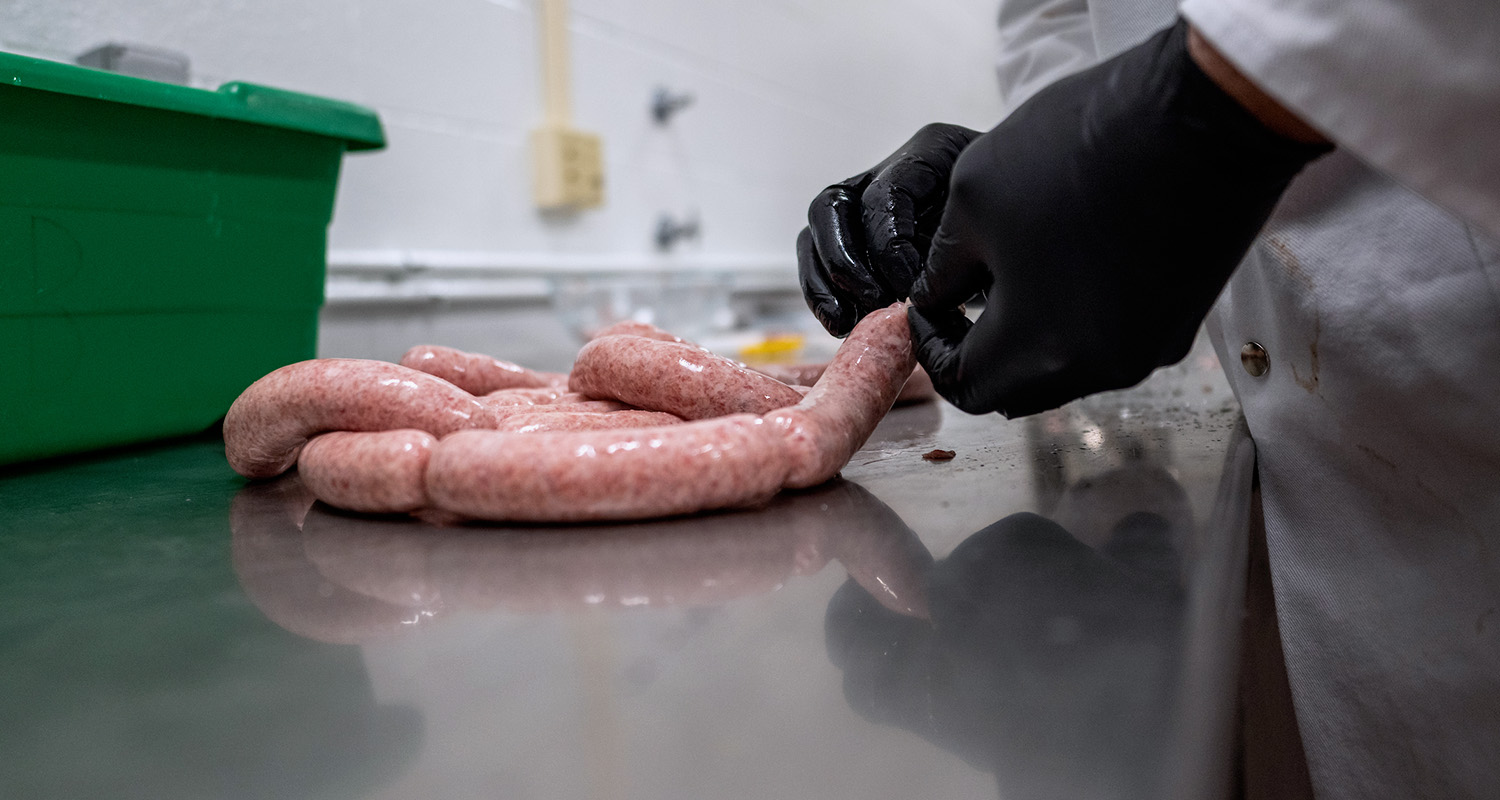
Specialized Learning Spaces and Resources
The Animal Physiology Lab is one of our most heavily used spaces since every animal science and dairy science student takes at least one animal anatomy and physiology class (and many go one to take advanced classes like reproductive physiology!). The room was designed with hands-on dissection in mind. The walk-in cooler and freezer are convenient for specimen storage. An overhead camera at the instructor's station and monitors throughout the room allow everyone to clearly see the instructor’s specimen dissection for comparison to what they are seeing as they dissect their own specimens. Full size skeletons of a horse and cow, computers and microscopes, including some scopes with heated stages for semen analysis, round out the equipment.
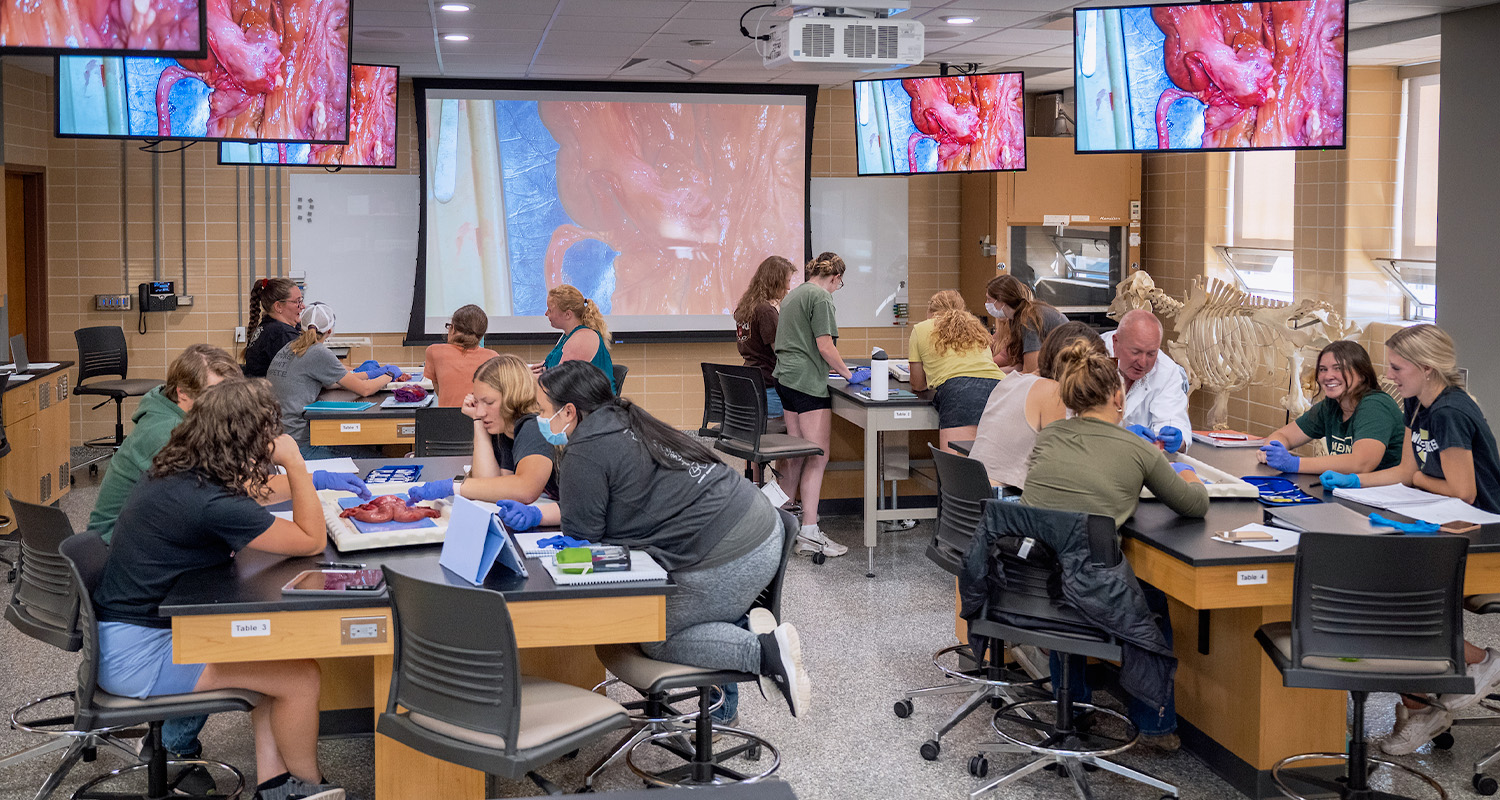
The Lydecker Living and Learning Center connects the two large residence halls on the east end of campus - Ames Suites and South Fork Suites. Some of the multipurpose spaces in the center are dedicated to the animal science-companion animal program, creating a companion animal learning center. As part of the Falcon FETCH program - our partnership with Can Do Canines - the students stay with their service dogs-in-training in Stratton Hall, but much of the training takes place at the Lydecker Center.
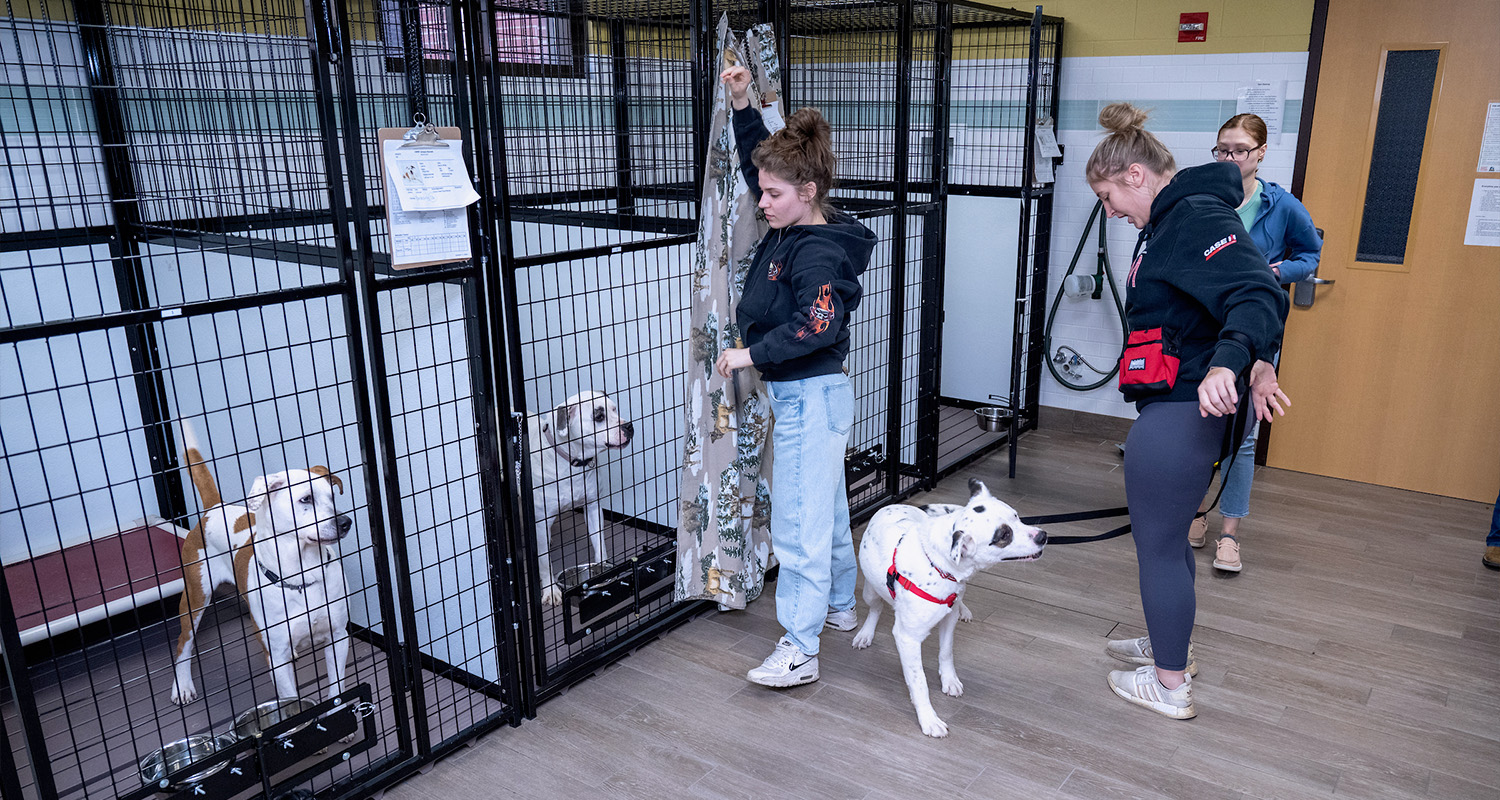
The dairy processing research lab is part of the Dairy Innovation Hub and houses a range of equipment designed for processing and analysis of dairy components including an ultra-high pressure homogenizer, a texture analyzer, a rotary evaporator, fluorescence and UV/Vis spectrophotometers, electrophoresis equipment, an incubator and range of basic lab equipment. One exciting project underway is the manipulation of casein proteins to encapsulate nutrients for better bioavailability!
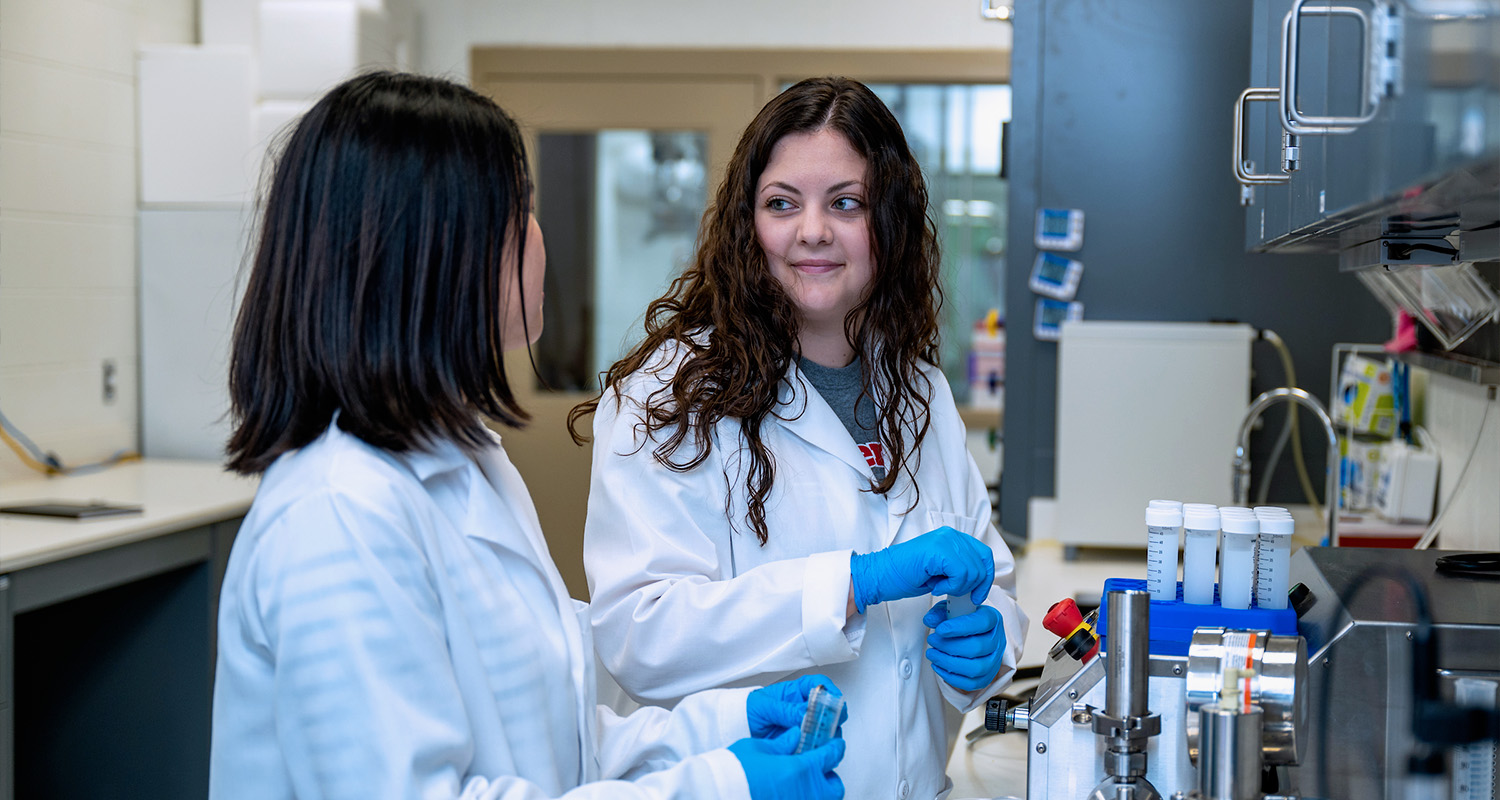
This on-campus Adoption Center is a partnership with the Dunn County Humane Society. The Advanced Canine and Feline Care and Management (ANSC 421) class maintains the facility, cares for the cats and staffs a regular schedule of open adoption hours.

A first-of-its-kind program, the Humane Handling Institute (HHI) provides comprehensive hands-on training for humane livestock handling, stunning and equipment maintenance. HHI is an outgrowth of work done by faculty and students in our Animal Welfare Lab. The two-day workshops are held on campus, using classrooms, the meat lab and Mann Valley Farm.
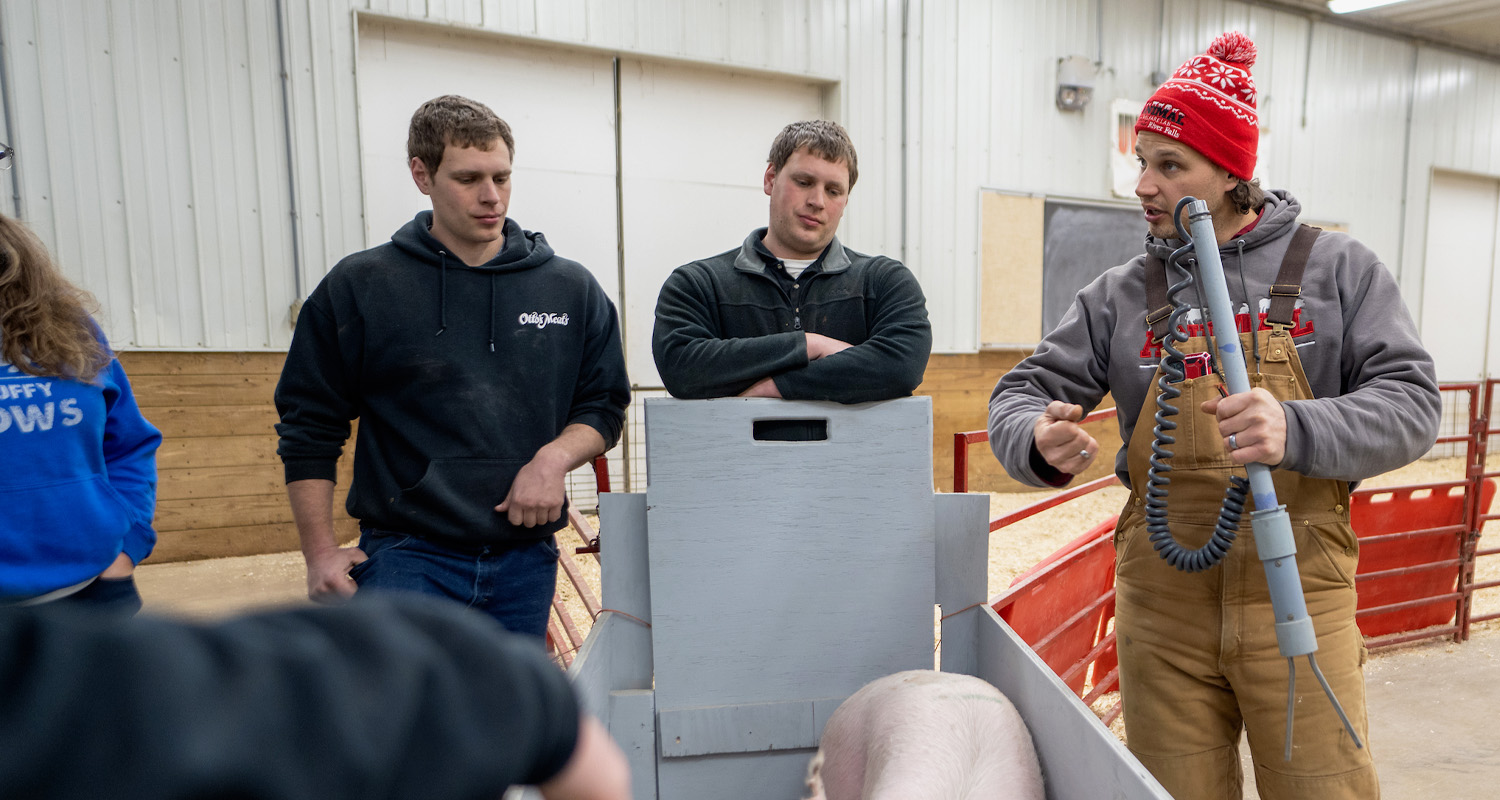
Animal and food science faculty and students have access to other unique laboratory spaces in the college that are also housed in the Ag Science Building Complex. There are well-equipped analytical labs maintained by the Plant and Earth Science Department that are available to us as needed. These labs house equipment capable of processing and analyzing both solid samples (manure, compost, food, animal tissue/bone) and liquid samples (water, digestates of animal tissue, etc.).
The Engineering and Technology Department houses several lab spaces that are useful for specific animal science and food science testing needs. A materials testing laboratory has equipment that can not only test metal strength but can test the tenderness of food. The bioprocessing lab has instrumentation that can measure food properties, calorie content, protein content and for conducting freeze-drying and fermentation experiments.
